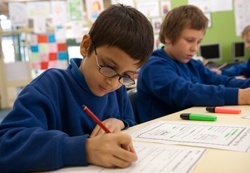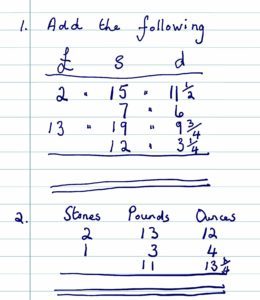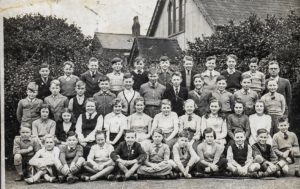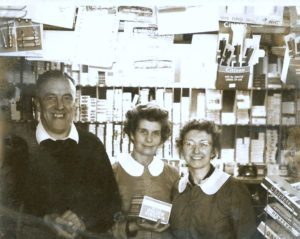Mental Maths Strategies
Mental Maths Strategies are important and always have been. The teaching of maths is constantly changing and what appear to be new concepts and different ways of learning makes it appear very difficult for those of us educated in the stone age.
Arithmetic
Looking back at a primary school report of mine the maths we did was called Arithmetic. There were marks for mental arithmetic, mechanical arithmetic and solving problems. We did not do graphs, algebra, geometry or trigonometry until we went to secondary school. However, a thorough grounding in arithmetic was very important.
This was in the days of the eleven plus exam in England. At the age of 11 you took the eleven plus exam and based on the result attained, won a place at a grammar school or stayed on at an all age school or if available went to a secondary modern school. There was a great deal of pressure to do well and pass “the scholarship”. The eleven plus still exists in the counties and boroughs which offer selective schools rather than comprehensive schools. Click on the link above to find out more about what was in the test.
NAPLAN
There was pressure on pupils and teachers then. Here in Australia there is a current debate about the validity of the naplan tests and how teachers are teaching towards success in the tests rather than encouraging more valid educational outcomes. Click on the link for more on NAPLAN.

Eleven-plus and Intelligence
There were three components to the eleven plus test: English comprehension, Arithmetic and an intelligence test. We were thoroughly taught what we might be expect to come in the tests. I read recently that the eleven plus exam was the only exam where people’s intelligence tests were used. It has been said that you cannot teach to improve intelligence quotients, however we were given lots of examples of tests to work out sequences of numbers, differences in shapes and some general knowledge that had appeared in previous papers.
Mr Canning’s Mental Maths Strategies
I was good at Arithmetic and English. In “mechanical arithmetic” I was careless and not accurate enough but I was very good at mental arithmetic and working out problems. Mr Canning our teacher in Standard Four would bring us out individually to his desk and fire at us rapidly a series of mental calculations to be done.
These included times tables and knowing how many ounces were in 2 and a quarter pounds. We had to know how many furlongs were in a mile and pre-decimal currency was another challenge. There were four farthings in a penny, 12 pennies in a shilling, 2 shillings and sixpence in half a crown, 20 shillings in one pound and 21 shillings in a guinea.
See if you can do the following two sums. For the second one you need to know there were 16 ounces in a pound and 14 pounds in a stone.

We were expected to know all our tables off by heart so that we could work out long calculations quickly. There were no calculators then. We also had to know weight and length tables. I and friends of my age can still recite – 12 inches one foot, three feet or thirty six inches one yard, 22 yards one chain (the length of a cricket pitch!), 10 chains or 220 yards in one furlong and eight furlongs or 1760 yards in one mile. Learning by rote was what we did. Metric is a cinch!

You will see from the photo we were a large class – there were fifty of us at the start of the school year but some were moved to a nearby school – only 42 present for the photo. There were no school uniforms for primary schools then.
Mental Maths Strategies at home
When I went to the Grammar School, maths included algebra, geometry, trigonometry and eventually differential calculus. I was not able to get any help with maths homework. My parents had both left school at 14 and had attended all age schools. Both were good at arithmetic. They had both worked in retail and were running a newsagents when I was at Grammar School. They could serve and give change so rapidly during the early morning rush when the factory workers from Horrockses Cotton Mill thronged into the shop for their papers and cigarettes.
Mum and dad got me to help behind the counter and adding up and giving change became second nature and gave my mental maths a boost. Having a practical use for mental maths is an incentive.

My mother did all the accounts but neither mum nor dad knew any geometry or trig. I did enjoy algebra, geometry and trigonometry and actually enjoyed finding a solution to problems set. It sometimes took me a very long time.
Working through maths problems led me to think very logically and in later life with no other maths training than I got at the Grammar School I have designed data bases and spreadsheet solutions for many clients.
So what has this got to do with helping your child at maths?
Make sure your child knows their basics eg times tables and number bonds. Test the times tables until they are second nature.
The Times Tables can be put up in a bedroom or as in the case of one family I know on the back of the toilet door. Knowing your tables saves so much time in calculating more complex problems.
Foster a love of numbers. Number bonds can be an intrinsic part of what becomes innate knowledge. Below is an example of number bonds. It shows how the number 15 can be represented by different number combinations.

Number bond activities help kids build their understanding of the part-part-whole concept, which refers to a whole number being made up of two or more parts. There are numerous worksheets which you can download for practice. Help your child see numbers as fun and interesting.
A number bond is a simple addition that becomes so familiar the child recognises it immediately thus saving much time doing more complex calculations. Make number bonds and tables fun and familiar and your child will have an invaluable aid.
Old versus New
I got a lot of number practice serving in the shop. It was very different then. We did not have a till. We had a drawer with compartments for one pound and ten shilling notes, half-crown coins, two shilling pieces (florins), one shilling, sixpences, threepenny bits, pennies and halfpennies. A customer might ask for a pack of Capstan Full Strength, a box of matches, a Daily Mirror and a packet of Polo Mints. We would total the cost of these mentally and tell the customer the total, He/she would tender their money and we would give change. All done in a minute or less.
Today working after school as a check out operator does not give the same mental maths practice, My daughter tells me that working at the Tuck Shop at home games for the Herberton Magpies would give similar practice to what I did. I have helped her bank the takings and it was good practice for granddaughter Abby, adding up all the five and ten cent pieces, dollar coins etc.
Obviously it is not practical for every school child to get such practice but you can use what is readily available in our day and age – the Internet and the App Stores, There are lots of games and apps that will help your child with numeracy and literacy.
We have a couple of apps that might help.
Firstly we have a homework app which lets students practice their tables as well as their weekly spelling lists.
and we have an app based on SBS’s Letters and Numbers. This is available for IPhone, IPAD and Android. This encourages the learning of tables, and number bonds and gives an incentive to keep improving.
Letters and Numbers Countdown App also available for IOS and Android devices
